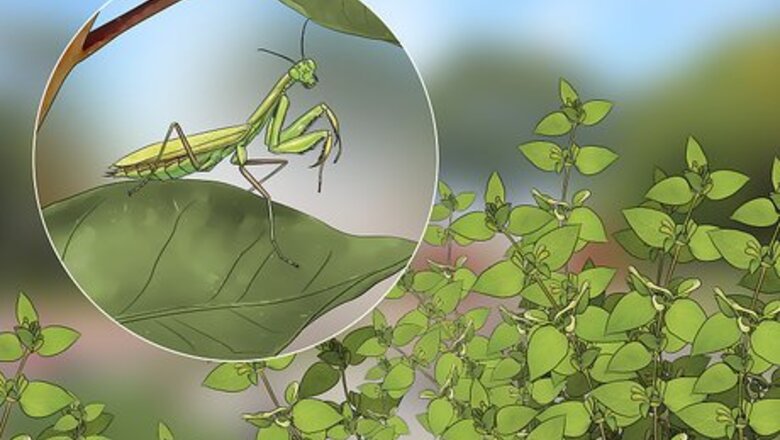
views
Catching the Mantis
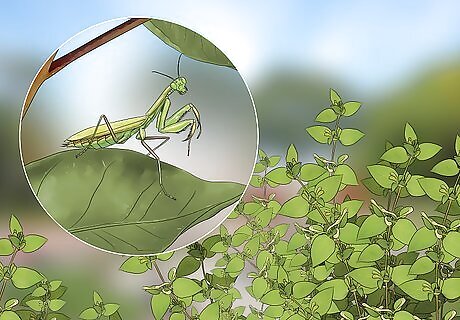
Look for a praying mantis in flowering shrubs and near woody plants. It’s impossible to know exactly where you might find a praying mantis, but they tend to favor areas with flowering shrubs and woody plants. Look closely at shrubs and plants near you, since the spindly bodies and green color of praying mantises allow them to easily blend into their surroundings. Look around your house, making sure to check humid places and plants or other greenery. Look in places with lots of insects and bugs, especially areas where you’ve seen praying mantises before.
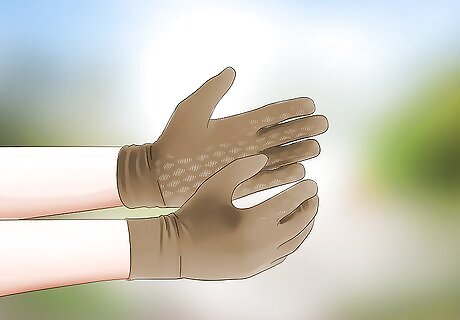
Wear gardening gloves before catching your mantis. Praying mantises aren’t poisonous, but they do bite. To prevent yourself from getting bitten, wear gardening gloves. If you get bitten by a praying mantis, shake your hand rapidly up and down to lessen the pain.
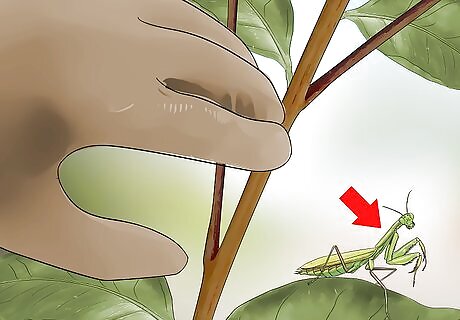
Simply hold your hand out to the mantis. It should climb right on. Make sure not to pinch it. You could use gloves to pick up the praying mantis.
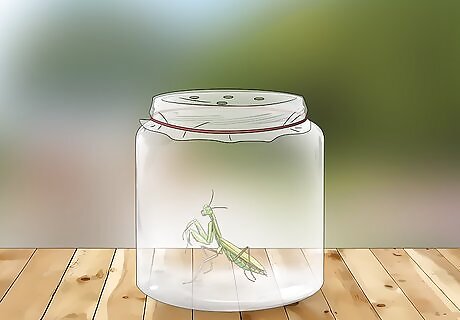
Let your praying mantis into a jar. A large empty jar that can hold 16 fluid ounces (473 mL) or more should work nicely. Place a piece of plastic cling wrap over the top of the jar and secure it with a rubber band. Punch several small holes in the plastic wrap to allow the mantis to get fresh air. A large peanut butter or kimchi jar should work nicely. Use a plastic jar if possible, as it is less likely to break than glass. When you’re out in the wilderness capturing your praying mantis, you can temporarily keep it in a small jar. For long-term care, however, it will need a larger habitat.
Preparing the Habitat

Provide an enclosure with a length of at least three times the length of your mantis’ body and a width of at least twice the length of its body. An enclosure of this size will guarantee that your mantis has enough space to move about. An aquarium cage with a mesh top will probably be your best option since an enclosure of this sort will allow for proper ventilation. Additionally, the height of the enclosure should be at least three times the length of your mantis.

Add a substrate to your mantis habitat. You could use shredded tissue paper, vermiculite, potting soil, sand, woodchips, or shredded bark. These materials will readily absorb water and release it slowly, ensuring the humidity of the mantis habitat remains relatively stable. There’s no one “right” volume of substrate you must add to your mantis habitat. 1 inch (2.5 cm) or 2 inches (5.1 cm) of substrate should be enough to keep your pet healthy and happy.

Place plants and twigs in your mantis’ habitat. Add plants like those that you found your mantis among to its habitat. In addition to small plants, you could add twigs, reeds, branches, artificial plants and flowers, or decorative plastic branches. Artificial plants and branches are often used in lizard habitats and should be available at your local pet store. If you use artificial plants or branches, ensure they are free of glue and insecticides. Add at least one branch to the habitat that measures three times the length of your mantis’ body. Your mantis will use this branch when shedding its skin.
Caring for Your Pet

Maintain the appropriate temperature and humidity. The appropriate levels of temperature and humidity vary depending on the particular species of mantis you’ve captured. Place a thermometer and a hygrometer in or near your mantis habitat to ensure that you’re housing it within ideal environmental conditions. If your pet is housed in a room that is too cold or too hot, consider moving it to a different space where the temperature can be more easily regulated. To increase the humidity, spray the substrate with water. The more you spray it, the more the humidity levels of the habitat will increase. You can also increase the humidity level by reducing the amount of air ventilation at the top of your mantis’ enclosure.
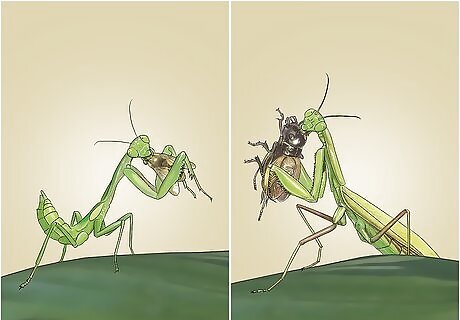
Feed your mantis flies and other insects. Praying mantises love eating flies, roaches, grasshoppers, mosquitoes, and other small insects. You can drop these bugs into your mantis’ habitat. Alternately, feed them directly to your mantis by gripping them gently with tweezers, then presenting them to your mantis. Your mantis won’t accept dead bugs, so you will have to buy live insects from a pet shop or catch some yourself. You can find these bugs in the woods or on farmland. If you feed your mantis live bugs, wait until you see it actually catch and eat them. Otherwise, the bugs might escape and die, and your mantis will go hungry. The amount of food your mantis needs depends on its species. Some species only need to eat once every four days, while others need to eat once each day.
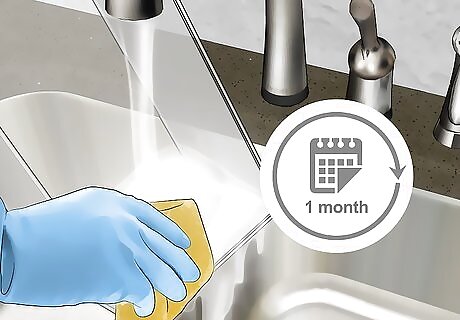
Clean your mantis’ habitat once a month. Remove your mantis to a small jar of the same size you used to capture it initially, then dump all substrate out of its habitat and wash it with hot water. Don’t use detergent, as it might harm your pet. Add new substrate and replace the shrubs and branches.
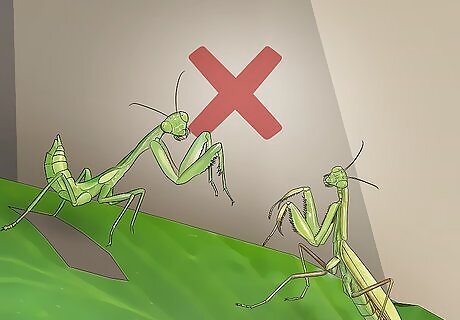
House your mantis alone. Praying mantises are not social creatures. If you house two together, they will attack each other.
Identifying Your Mantis' Species
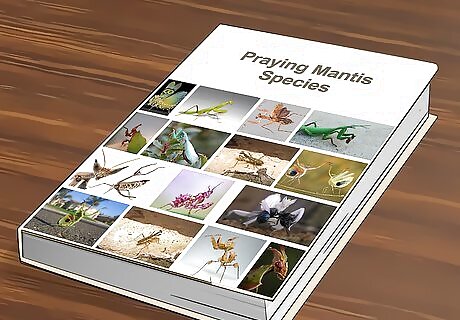
Identify your mantis species based on your location. Different mantis species have different natural habitats. For instance, the Carolina mantis will not be found in England, since it only lives in the U.S. Consult a book of praying mantis species and their known native habitats to discover which of the 2,400 species your praying mantis belongs to. The Carolina mantis is found in the U.S. from New York south to Florida. It is found from the east coast through Utah, Arizona, and Texas. The black barrel or eight-spotted mantis is native to Australia and New Guinea. Theopropus elegans is a species native to Singapore, Myanmar, Malaysia, Sumatra, Java, and Borneo.

Measure your mantis. Use a ruler to measure your mantis’ length. Different species tend to have different body sizes. For instance, the Chinese mantis reaches 4.5 inches (11 cm), but the Carolina mantis reaches only 2 to 2.5 inches (5.1 to 6.4 cm). Using a book describing the differences between the many mantis species, compare the length of your mantis against the lengths of the other mantis species in order to identify which one your mantis belongs to.
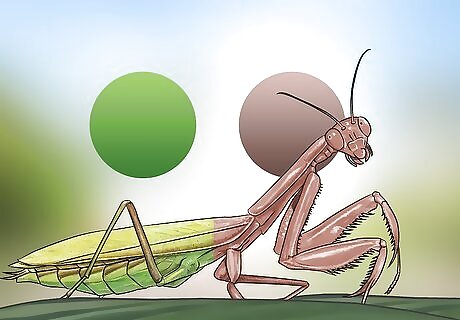
Don’t try using color to determine which species of mantis you have. Mantises are typically green or brown, but even mantises of the same species often have different colors.
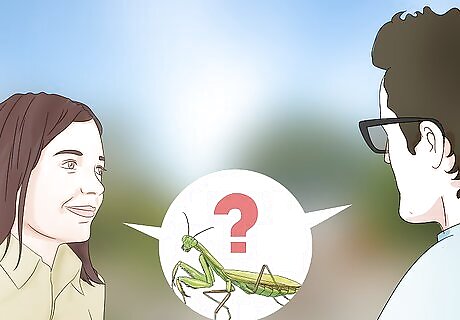
Ask an entomologist. Entomologists are bug experts. If you’re having trouble identifying your mantis’ species, a trained entomologist could help. Contact entomologists at your local university or entomological society and ask if they would be willing to help you identify your particular mantis species.




















Comments
0 comment